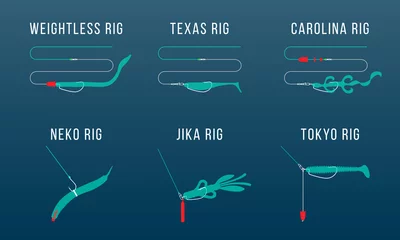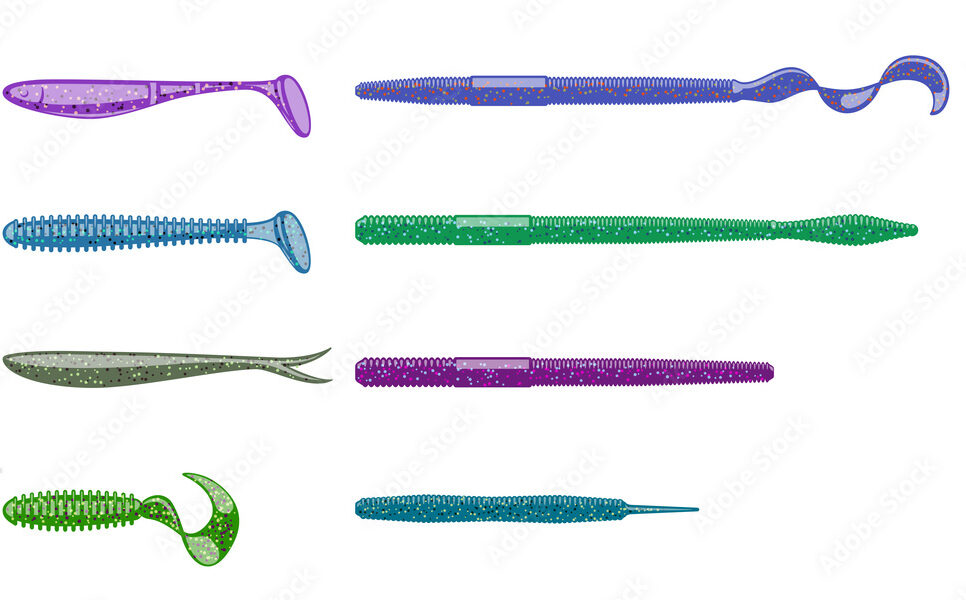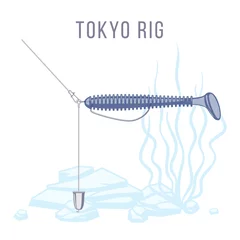The Ultimate Guide to Texas Rig Fishing

Fishing is not just a hobby; it’s a passion that connects anglers with nature. One of the most effective techniques in an angler’s arsenal is the Texas Rig. Whether you’re a seasoned pro or a weekend warrior, understanding the Texas Rig can enhance your fishing experience and increase your catch. This guide will delve deep into the Texas Rig, covering everything from its setup to techniques and benefits.
What is a Texas Rig?
The Texas Rig is a popular fishing technique primarily used for bass fishing. It consists of a hook, a weight, and a soft plastic bait. The unique configuration allows the bait to present itself in a natural way, making it irresistible to fish. The Texas Rig is known for its effectiveness in various fishing conditions, from shallow waters to thick cover.
Brief History of Texas Rig Fishing
Originating in Texas (hence the name), this rigging style has been a go-to method for anglers since the late 20th century. Its simple yet effective design quickly caught on, as it provided an efficient way to present soft plastics in both clear and murky waters.
Benefits of Using Texas Rig
Versatility in Different Fishing Environments
One of the primary reasons for the Texas Rig’s popularity is its versatility. It can be used in a variety of environments—whether you’re fishing in dense vegetation, open water, or rocky bottoms. This adaptability makes it a favorite among anglers targeting different species of fish.
Reduced Snags
The Texas Rig is designed to be weedless, which means it’s less likely to snag on underwater structures. This feature allows anglers to fish in heavy cover without constantly worrying about losing their rig.

Effective for Various Species
While bass fishing is where the Texas Rig shines, it’s also effective for targeting other species like perch, pike, and even catfish. Its ability to mimic the natural movement of prey makes it a versatile choice for many anglers.
Essential Equipment for Texas Rig
Choosing the Right Rod and Reel
To maximize your Texas Rig fishing, selecting the right rod and reel is crucial. A medium to medium-heavy spinning or baitcasting rod, paired with a reel that has a smooth drag system, will provide the best results.
Selecting the Perfect Line
Monofilament or fluorocarbon lines are popular choices for Texas Rig fishing. A 15-20 lb test line is typically ideal, providing the strength needed to handle larger fish while maintaining sensitivity.
Hooks and Weights
Choose hooks that are appropriate for the size of your bait—typically, a 3/0 to 5/0 offset worm hook works well. For weights, a bullet weight ranging from 1/8 to 1 oz is common, depending on the depth and current.
Setting Up a Texas Rig
Step-by-Step Guide to Setup
- Thread the Weight: Slide the bullet weight onto the line.
- Tie the Hook: Use a knot (like the Palomar knot) to attach the hook.
- Bait the Hook: Insert the hook into the soft plastic bait, ensuring it is Texas rigged (weedless).
- Adjust the Bait: Make sure the bait sits straight and doesn’t have any kinks.
Types of Baits to Use
Popular bait options include creature baits, worms, and lizards. The choice depends on what the fish are biting on and the conditions of the water.
Knot Tying Techniques
Mastering knot tying is essential for any angler. The Palomar knot and the improved clinch knot are great options for Texas Rig setups, ensuring your hook remains securely attached.
Techniques for Fishing with Texas Rig
Basic Retrieval Techniques
Start with a slow, steady retrieve. As you reel in, keep an eye on your line for any unusual movements. This could indicate a fish biting!
Advanced Techniques (e.g., Dragging, Hop & Stop)
- Dragging: Slowly drag your rig along the bottom, pausing occasionally.
- Hop & Stop: Lift the rod tip to make the bait hop off the bottom and then let it settle again.
Adjusting Techniques Based on Conditions
Different conditions may require adjustments to your techniques. In murky water, a faster retrieve might be more effective, while clear water may necessitate a slower, more deliberate approach.
When to Use Texas Rig
Best Seasons for Texas Rig Fishing
Spring and fall are generally the best seasons for using a Texas Rig, as fish are more active during these times. However, this technique can be effective year-round with the right adjustments.

Ideal Locations (Lakes, Rivers, Ponds)
Texs Rig fishing works well in various locations, including lakes, rivers, and ponds. Target areas with structure like submerged logs, rocks, or weeds.
Conditions Favorable for Texas Rig
Overcast days or times when fish are actively feeding are excellent for Texas Rig fishing. Additionally, fishing during dawn or dusk can yield better results as fish are more likely to be on the move.
Common Mistakes to Avoid
Incorrect Knot Tying
Taking shortcuts when tying knots can lead to lost fish. Ensure your knots are secure and practice until you feel confident.
Using Too Heavy a Weight
While it might be tempting to use heavier weights to keep your bait down, too much weight can deter fish. Find a balance that allows for natural presentation.
Poor Bait Selection
Using baits that don’t mimic the local forage can be a mistake. Always consider what fish in the area are currently feeding on.
Tips for Success with Teas Rig
Adjusting Your Approach
Don’t be afraid to switch things up. If you’re not getting bites, try changing your retrieve speed or switching your bait.
Listening to the Water
Pay attention to the sounds and movements around you. Fish often reveal their presence before you see them!
Staying Patient and Observant
Fishing requires patience. Stay alert, and don’t rush the process. Sometimes the biggest catches come when you least expect them.
Conclusion
The Texas Rig is a versatile and effective fishing technique that every angler should have in their toolkit. By understanding how to set it up and use it effectively, you can increase your chances of landing that big catch. Whether you’re fishing in a local pond or a vast lake, the Texas Rig can be your ticket to a successful day on the water.
Read Also: bass-fishing
FAQs
What type of fish can you catch with a Texas Rig?
The Texas Rig is especially effective for bass but can also be used to catch a variety of species such as catfish, pike, and perch.
Can I use a Teas Rig in saltwater fishing?
Yes, while the Teas Rig is primarily used for freshwater fishing, it can also be adapted for saltwater species using appropriate baits and tackle.
How does the weight of the Teas Rig affect fishing?
The weight affects how deep and quickly the bait sinks. Heavier weights allow for deeper presentations but may deter bites in certain conditions.
Is the Teas Rig better than other rigging techniques?
It depends on the fishing conditions and target species. The Texas Rig excels in heavy cover and when using soft plastics, but other techniques may be more effective in open water.
What’s the best time of day to use a Teas Rig?
Early morning and late afternoon are often the best times for Teas Rig fishing, as fish are typically more active during these periods.



